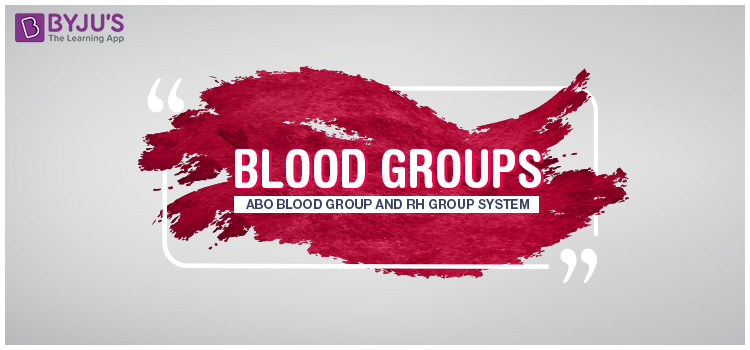Blood is a fluid connective tissue and the most crucial component of the circulatory system. In a healthy person, approximately 5 liters (12 pints) of blood circulates throughout their body. In this article, blood groups and their types are explained in detail.

Composition of blood is rather interesting. It consists of erythrocytes, leukocytes and platelets suspended in plasma along with the millions of different molecules with its own specific roles and functions.

Even though components of blood are the same for all humans, there are various blood types. In fact, there are more than 40 blood groups, but all of them are not clinically significant. The discovery of the ABO blood group created great excitement as until then, all blood had been assumed to be the same.
Blood Group System
Karl Landsteiner, an Austrian scientist discovered the ABO blood group system in the year 1900. In his experiments, he mixed different blood types and noted that the plasma from certain blood type produced agglutinates or formed clusters which were caused by the absence of molecules on red blood cells and resulting in antibodies to defeat that molecule. He then made a note of the agglutination and divided the blood types into 4 different groups. For the discovery of ABO blood group, he was awarded the Nobel Prize.
The blood grouping system is pivotal in blood transfusion. Our immune system recognizes another blood type as foreign and attacks it if introduced in the body causing a transfusion reaction. Any inappropriate match with the Rh and ABO blood types, causes the most serious and life-threatening transfusion reactions. Therefore, before blood transfusion, it is suggested to have a blood group checked.
What are ABO and Rh blood groups?
During the blood transfusion, the two most important group systems examined are the ABO-system and the Rhesus system.
The ABO blood group system consists of 4 types of blood group – A, B, AB, and O and is mainly based on the antigens and antibodies on red blood cells and in the plasma. Both antigens and antibodies are protein molecules in which antigens are present on the surface of Red Blood Cells and antibodies are present in the plasma which is involved in defending mechanisms.
On the other hand, the Rh blood group system consists of 50 defined blood group antigens. In the Rh system, the most important antigens are D, C, c, E, and e. The ABO and Rh blood systems are discussed in detail below.
1. ABO blood Group system
The basis of ABO grouping is of two antigens- Antigen A and Antigen B. The ABO grouping system is classified into four types based on the presence or absence of antigens on the red blood cells surface and plasma antibodies.
- Group A – contains antigen A and antibody B.
- Group B –contains antigen B and antibody A.
- Group AB –contains both A and B antigen and no antibodies (neither A nor B).
- Group O – contains neither A nor B antigen and both antibodies A and B.
The ABO group system is important during blood donation or blood transfusion as mismatching of blood group can lead to clumping of red blood cells with various disorders. It is important for the blood cells to match while transfusing i.e. donor-recipient compatibility is necessary. For example, a person of blood group A can receive blood either from group A or O as there are no antibodies for A and O in blood group A.

As shown in the above table, individuals of blood group O are called as universal donors, whereas individuals of blood group AB are universal recipients.
2. Rh Blood Group System
In addition to the ABO blood grouping system, the other prominent one is the Rh blood group system. About two-thirds of the population contains the third antigen on the surface of their red blood cells known as Rh factor or Rh antigen; this decides whether the blood group is positive or negative. If the Rh factor is present, an individual is rhesus positive (Rh+ve); if an Rh factor is absent individual is rhesus negative (Rh-ve) as they produce Rh antibodies. Therefore, compatibility between donor and individual is crucial in this case as well.
Frequently Asked Questions
What are blood group antigens and antibodies?
The ABO system divides blood into four major blood groups:
- Blood type A contains anti-B antibodies and A antigens in the plasma.
- Blood group B contains anti-A antibodies and B antigens in the plasma.
- Blood type O has both anti-A and anti-B antibodies in the plasma but no antigens.
- Blood type AB lacks antibodies but possesses both A and B antigens.
How are blood antibodies formed?
The immune system uses antibodies white blood cells produce to recognise and combat foreign elements in the body. Red blood cells have blood type antigens on their surface, but the immune system does not recognise them. However, antibodies will recognise the antigens of a different blood type as foreign and attack them.
To learn more about Blood groups with interactive video lessons, keep visiting BYJU’S.

Very helpful thanks Byju’s